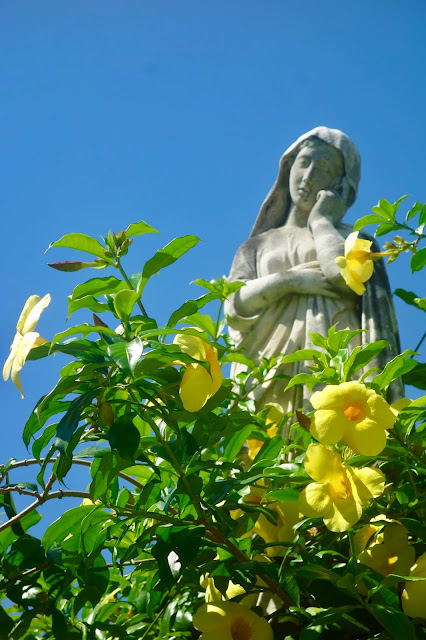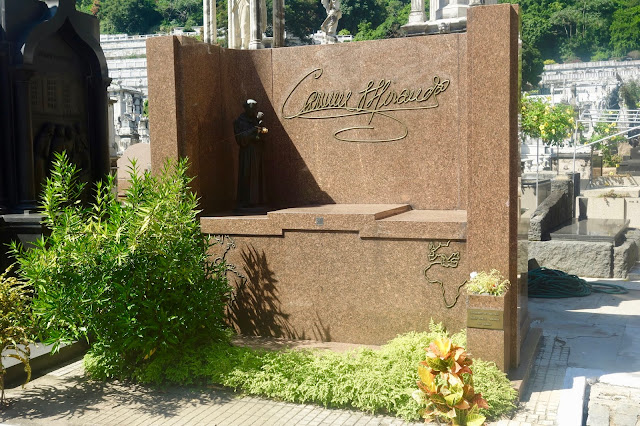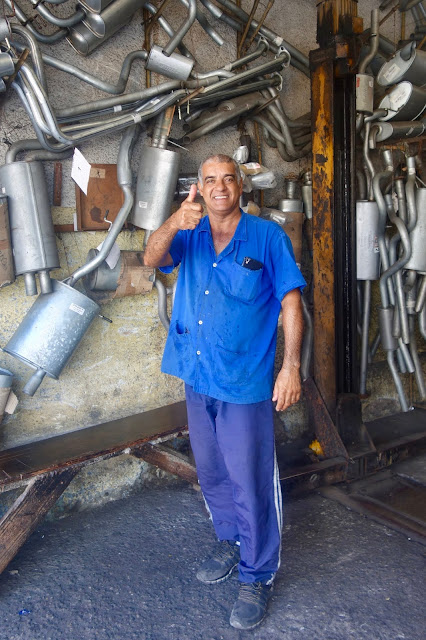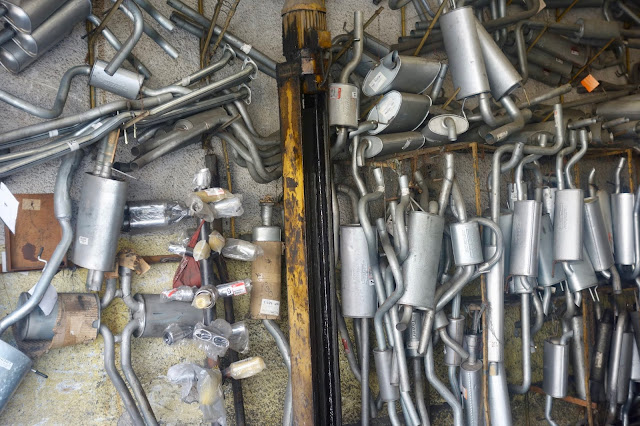Were it not for the mountain tunnel connecting Copacabana to Botafogo, it would have been a steep climb through a favela.
So much peace and beauty awaited us on "the other side."We entered through a rear gate, not far from a flower shop.
Christian imagery dominated, as you would expect in a country that has the world's largest Catholic population.

Classical and Art Deco influences shaped several of the most distinctive tombstones.
Some of the deceased, mostly men, celebrated their careers.
Others, themselves.
In death, Carmen Miranda chose piety over camp.
We also took a quick peek a nearby museum, a villa owned by Brazil's most famous composer. Briefly embraced by Hollywood, Heitor Villa-Lobos seasoned his mostly classical compositions with a dash of samba and put South American music on the world map.
Villa-Lobos introduced us to the interesting work of Dimitri Ismailovitch, a Brazilian painter born in Russia. Relatively unknown, he captured the glorious ethnic, if mostly male, diversity of his adopted country in these 20th century paintings.
Street art in Botafogo is just as colorful.
Our walk back to Copacabana took us past two very different shops.
More Cemeteries:









































No comments:
Post a Comment